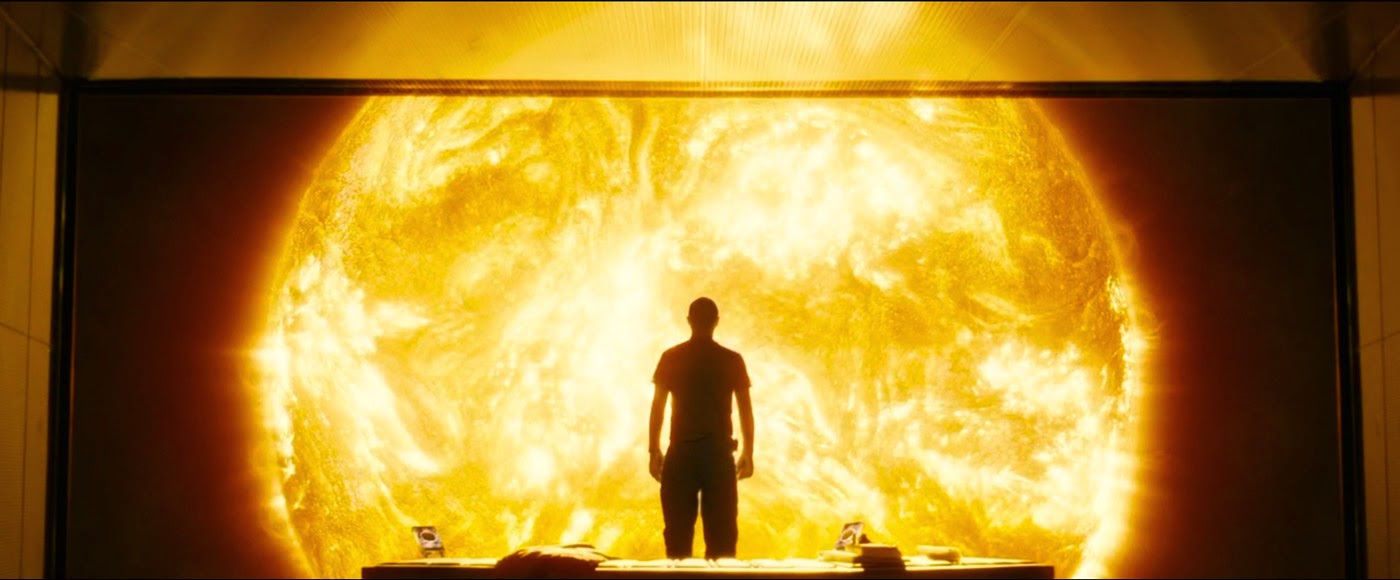Most recently I've started creating a bit of a tribute to the movie Sunshine. I really love the solar observation deck depicted near the start of the film:
 |
| Sometimes it's small, sometimes it's big. |
 |
| Cliff Curtis asking the sun just how many characters of different ethnicities he can get away with playing. |
I thought this might be a suitably contained idea to learn some realtime rendering skills and game dev abilities. I'm choosing not to focus on interaction so much as art direction. I'm aiming to make a place where you can just go and sit quietly for a while and watch the sun like the characters in the film did.
Along the way to this I've had the rude-awakening of just what realtime rendering means and how much we are unconstrained and sort of lazy in the film VFX world. In VFX if something takes even 24 hours to render, well, that's kind of ok because the end result should be amazing right? Well in games the goal is often to pull off stunning visual complexity 60, 75 and up towards 120 times per second. And often on hardware that lags behind the sort of computing power available to me at work.
 |
| Another cool moment where the crew gather to watch Mercury transition across in front of the sun. |
To do this, every aspect of scene creation needs to be efficient. Absolutely NOTHING that does not need to be computed should be:
Extra faces/verts/edges on your model that are not contributing? Get rid of them.
Small modelled-in details that could be represented more efficiently in a map? Map it.
Extra lines in your shader doing nothing? Get rid of them.
Extra geometry being transformed around that you can't see? Get rid of it.
Using the similar shaders on multiple different objects? Make it one. Make them all one!
Fancy looking particle collisions you can't see and don't really add much? Get rid of them.
Amazing post-effects bringing your framerate down? do you REALLY need them?
This approach really forces you to consider economies that impact art direction. How fast are procedural textures when you could paint a map? Do you really need to see all the curvature on the edge of that seat you won't get close enough to see if it's costing you 1 FPS? No. So it's a bit of a change from my day job at Weta.
So right now I've pretty much just got the sun, some flares, some particles, some observation lounge geometry and that's about it. But I also have 75fps on my 680MX on OSX so that's a good sign too. And given the current state of the Oculus SDK and runtime [4.3beta], I should be able to continue to get a decent framerate in the future and definitely a speed boost under Win7. The screenshots below are very work in progress and do not represent the final appearance of this demo.
 |
| My sun at the moment, slowly spinning, painted with map data from the Solar Dynamics Observatory. |
 |
| Just like Minecraft, only hotter. |
 |
| And of course in the Rift, looking out at my first attempts to paint the solar flare shape textures. |
* Have a viewer-controllable exposure facility so you can radiate yourself should you wish.
* Key music from the movie soundtrack - or ambient ship thrum noise.
* Viewer-triggerable Mercury transition.
* Heat-haze effect to depict the atmosphere in the viewing lounge.
* Sun-shaft optical effects.
* A seated figure with mirrorshades on so you can share your epiphanies. [Paging Cliff Curtis to the solar observatory deck]
Like I said, I'm not planning to focus much on interaction with this one just atmosphere really. But I'm having a blast steadily solving problems one after the other and learning classic game tricks to speed things up.
A couple of tools from the Unity Asset Store I'm using include Sonic Ether's Natural Bloom and Dirty Lens, and also ProFlares [which needs some Oculus compatibility updates].
Next up on my list is HDR cubic environment maps and physically-based rendering.
So much to learn. So many ways to screw up ;-)
-julian






